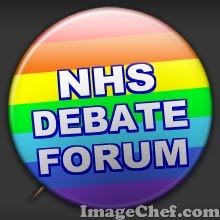Hospital doctors wanting to raise fears about patient safety are to be given an anonymous “whistleblower” helpline because of growing evidence of staff reluctance to speak out for fear of recriminations.
The dedicated phoneline has been set up as part of new guidelines issued by the British Medical Association, and seen by The Times, designed to help to formalise the process of “whistleblowing” in the NHS.
Doctors will be presented with two motions at the BMA annual conference next week calling for action to address staff concerns about reporting malpractice.
One motion, proposed by the BMA’s agenda committee, warns that the NHS risks another patient safety scandal like that of Mid-Staffordshire where 400 deaths were linked to poor care, such is the scale of the problem. It calls for trusts and regulators to pool all complaints from clinicians to identify worrying trends.
A second motion, proposed by junior doctors, calls on the General Medical Council to recognise formally that the harassment of whistleblowers is a serious breach of medical regulations. It also requests guidance on whistle-blowing.
Tom Dolphin, a junior doctor specialising in anaesthesia based in East London, said he had felt compelled to act after hearing of the experiences of colleagues who had to work without some patient-monitoring equipment.
“One colleague needed equipment that wasn’t there, and was told there wasn’t any. There can be a culture of ‘that’s the way it's always been and no one’s come to harm yet anyway’. Others tried to raise concerns, got nowhere and had pretty much given up.”
The BMA guidelines, released today, follow research suggesting hospital doctors are frequently frustrated in their attempts to raise concerns about standards of care, despite recommendations by the Department of Health for the development of whistleblowing policies six years ago.
A survey of 565 doctors working in hospitals in England and Wales found that three quarters had had concerns about issues relating to patient safety, malpractice or bullying in the NHS, the majority linked to standards of patient care.
Many said that their experiences of reporting issues had been negative — either because they were ignored or because their complaint was shared more widely than they were comfortable with. One in six doctors who reported concerns said that their trusts had indicated that their employment could be negatively affected.
The BMA advises hospital doctors to err on the side of raising any concerns about malpractice or systemic failures, and to do it as soon as they can, rather than allowing the situation to reach a point where patient safety is threatened. It points out that employees who are victimised after raising their concerns can go to an employment tribunal, and that employers can be heavily fined.
“If told not to raise or pursue any concern, even by a person in authority such as a manager, you should not agree to remain silent,” it states, adding that “raising concerns is not just a matter of personal conscience — in some circumstances it is a professional obligation”.
Last month Jonathan Fielden, the chairman of the BMA consultants committee, called for sweeping changes to reporting problems in the NHS. He said that “a culture of inactivity and despair is preventing issues from coming to light, and putting patient care at risk”.
Margaret Haywood, a nurse, is appealing to the High Court against a decision by the Nursing and Midwifery Council to strike her off the register for secretly filming at a Brighton hospital. Footage showed examples of neglect, including an elderly patient sitting in clothes he had soiled the night before.
Earlier this month the National Patient Safety Agency (NPSA) called for greater reporting of safety issues in hospitals in a report on paediatric healthcare. It said that 10,000 alerts over medication given to children were being issued annually in the NHS, including errors in the calculation of drug doses and health workers forgetting to give patients their medicine. The NPSA report concludes that over the period of a year 33 children and 39 newborn babies died with “indicators of avoidable factors”.










0 comments:
Post a Comment